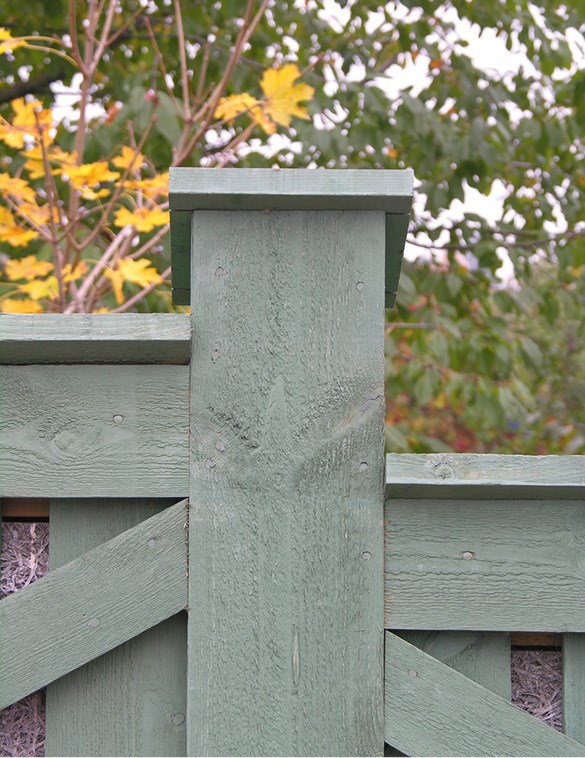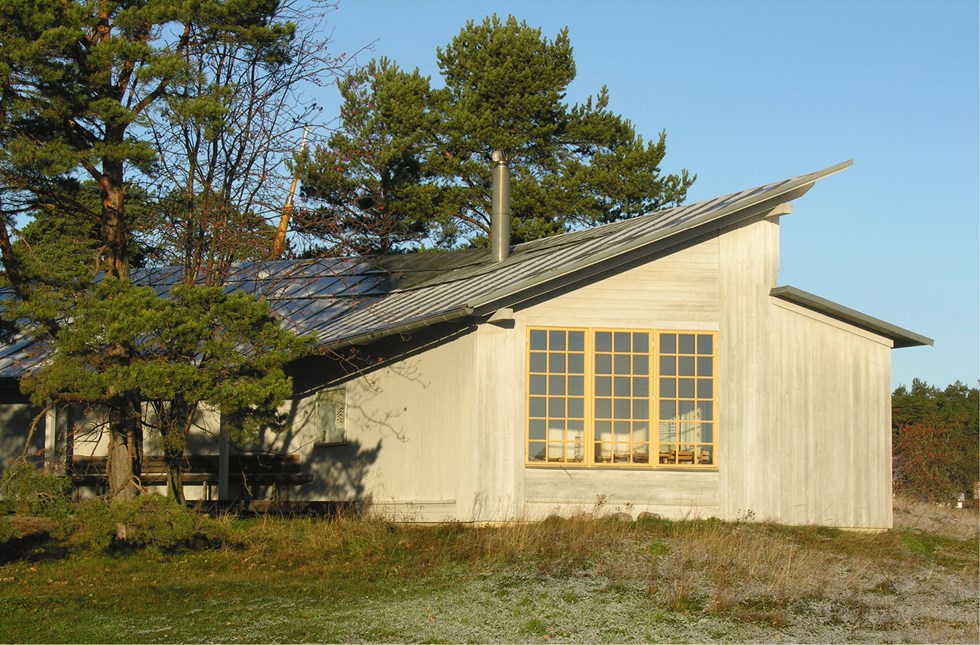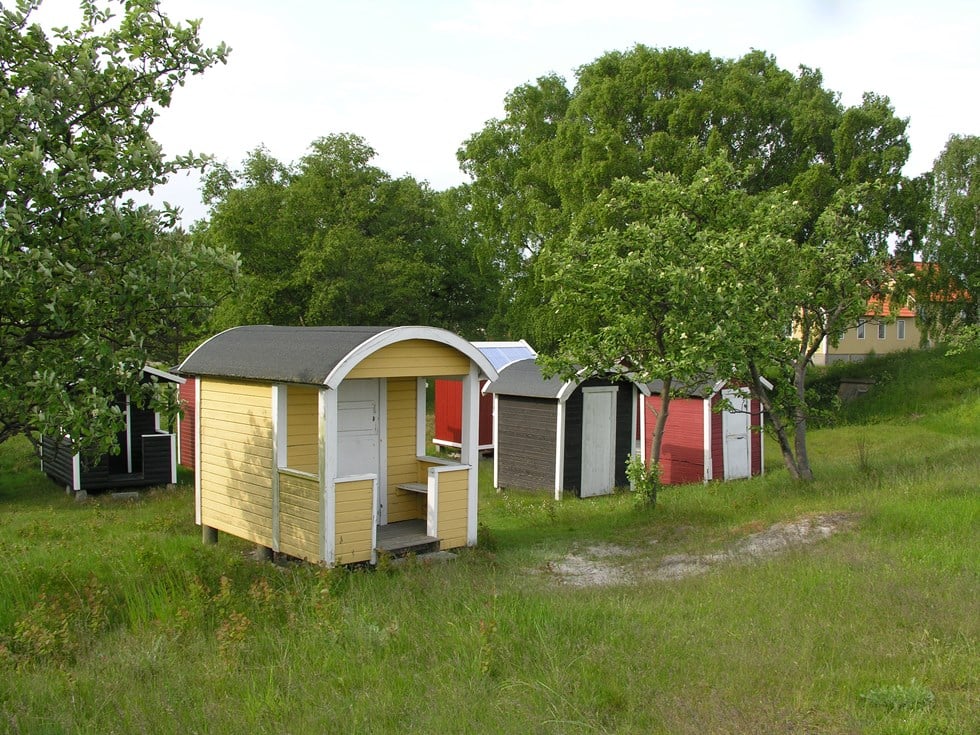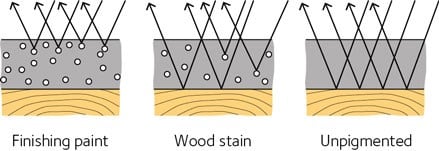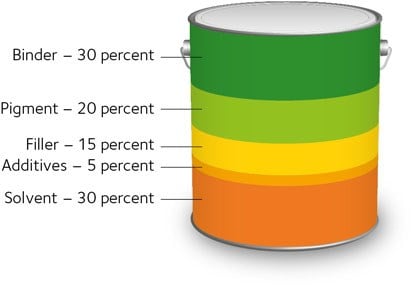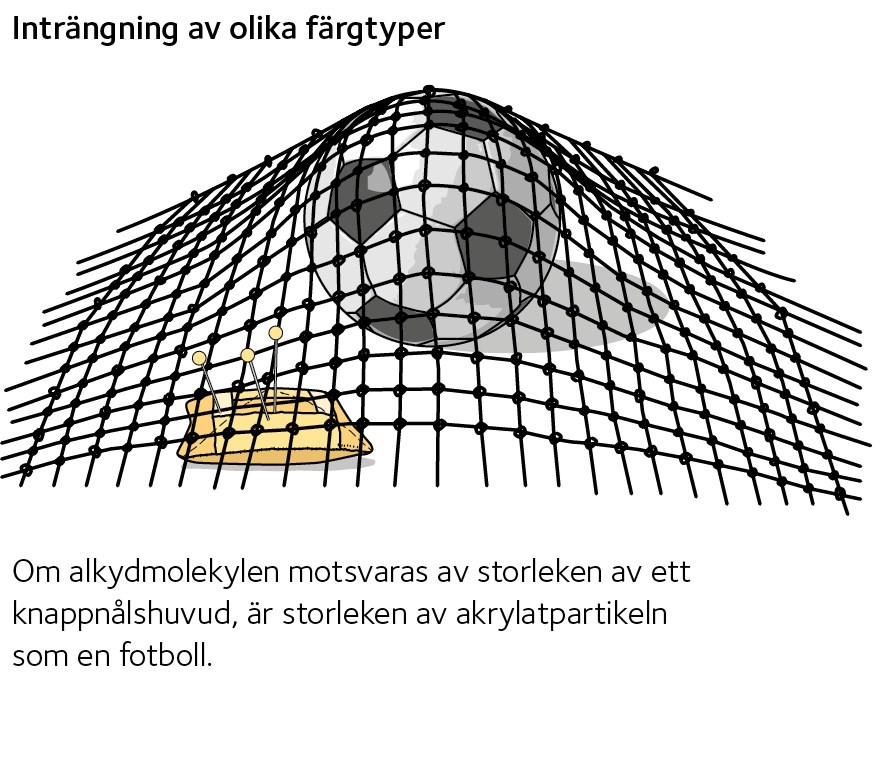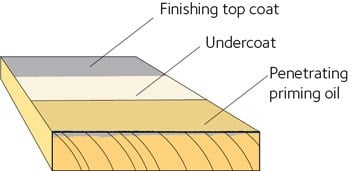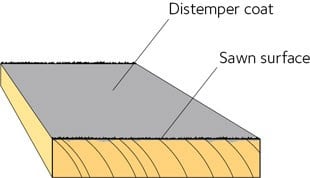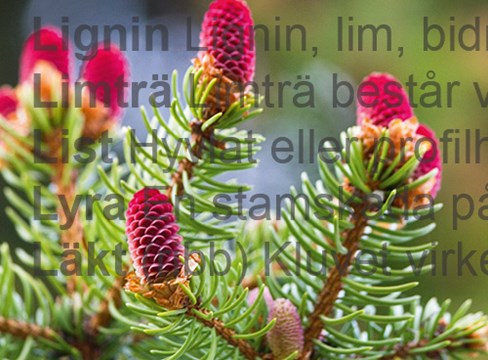Surface treatment of exterior wood
Choosing a paint type for exterior painting
Untreated wood surfaces will age over time. Dark woods will lighten and pale woods will darken. These changes do not occur evenly; aspect, exposure, location indoors or outdoors and so on can cause colour differences. An untreated wood façade can weather to a range of shades from white to black.
Treated wood surfaces age differently, depending on the surface treatment’s ability to protect the wood against decay. Under a layer of paint, the wood can remain entirely unaffected, while the wood under a pigmented wood stain may begin to age after just a few years.
Therefore, the choice of coating has a major impact on the need for maintenance. Paint may be chosen for a particular colour, but also for its protection against penetrating moisture.
The durability of the surface treatment depends on various factors, including the quality of the wood substrate, the choice of treatment system and the stresses to which the surface treatment is subjected.
Paint adheres better to a fine-sawn surface than to a planed surface. The surface treatment also adheres better to newly manufactured and unexposed wood. Wood surfaces begin to break down when exposed to sun and rain, which adversely affect the bond between the surface treatment and the wood beneath.
Wood that is to be painted on the construction site should have a surface moisture content of max 16% and be primed as quickly as possible to protect against UV radiation. This also applies to pressure-treated wood.
Technical advances and environmental requirements have led to the constant development of paints and paint systems. Older paint types, such as distemper and linseed oil paint, are still in use, although newer paint systems account for the majority of the treatments used today.
Choosing the best treatment depends on the desired functionality and the look of the end result. Sometimes, the substrate to be treated can limit the choice of paint type. Fresh painting or maintenance of an older treatment can prompt very different choices. The various paint types can be divided according to:
- Film formation; i.e. how thick the layer of paint is, how much of the substrate can thus be seen and how well the paint layer prevents decay of the substrate.
- Binder; the main constituent of the paint and what forms the paint layer once the diluent has evaporated. The binder determines how well the paint layer bonds to the substrate.
- Diluent; environmental requirements have led to organic diluents being replaced by water in most paint types. This has also led to paint types that previously would not have been mixed together occurring in the same paint type, known as hybrid paints.
Film formation
The film formation of a surface treatment is a measure of how well the decay of the underlying wood is prevented and how well the wood structure shows through the paint layer.
Oils and clear varnishes
Unpigmented oil or clear varnish gives a thin film that clearly shows the structure of the wood. The colour is determined by the colour and ageing of the wood itself. Oils that contain wax should be avoided if the surface is to be painted.
Wood stains
Wood stain has a low pigment content and gives a thin film that clearly shows the structure of the wood. The colour is determined by the colour of the stain coupled with the colour of the wood. This means it is hard to achieve the same colour when carrying out maintenance of the finish.
Solid wood stain
Solid wood stain gives a rather thicker film, but still clearly shows the structure of the wood. The main difference compared with an ordinary wood stain is that the colour is determined entirely by the paint. The colour of the wood is fully covered up.
Finishing paint
Finishing paint has a high pigment content and gives a relatively thick film that provides good protection for the surface of the wood. Finishing paint shows none of the wood’s colour, and also covers much of the wood’s structure.
Types of binder
The most common binders for on-site painting of wood are acrylate, alkyd oil, linseed oil, rye flour and wheat flour. These also occur in combination.
Acrylics: Acrylate: Acrylate (often also acrylic) refers to polymers of acrylic acid esters and acrylic acid. These polymers are dispersed in water to form a dispersion – a liquid with small suspended particles. They are used as a binder, hence the use of the term dispersion paints. Combining different acrylic acid esters can produce acrylic binders with different properties. See also Glossary.
Alkyds: Alkyds are polymers (synthetic resins) that are used as a binder in solvent-based and water-based paints. Adjusting the composition of the constituent substances in the alkyd can produce widely differing properties. See also Glossary.
Linseed oil is pressed from the seeds of the flax plant. It is used as a binder in traditional paint manufacture and has extremely small molecules, providing good protection against moisture. The linseed oil should be cold-pressed – raw or boiled. Linseed oil oxidises in contact with the oxygen in the air under mild conditions, with a drying time of one or two days. Linseed standoil is a linseed oil that has been heat-treated for a higher viscosity (larger molecules). Linseed standoil generally has high gloss and excellent weather resistance. In addition to linseed oil, linseed oil paint contains other components that, to varying degrees, affect its drying capacity and final properties.
Rye and wheat flour: Distemper has a binder made up largely of starch adhesive. In traditional distemper, the binder tended to comprise rye flour adhesive, casein, liquid potassium silicate, resin, linseed oil, whale oil or herring brine. The diluent was water. Iron sulphate was also usually included. Nowadays, distemper is mainly made up of pigment, rye or wheat flour, linseed oil and iron sulphate, suspended in water.
Paint diluent
The most common diluents in exterior paint are water and white spirit. The task of the diluent is to give the paint the right painting properties. Traditionally, oil and alkyd oil paints have used white spirit and acrylics have been water-based, but today it is increasingly common to see water-based oil and alkyd oil paints, known as hybrid paints. The reasons for this relate to human health and the environment. White spirit is in the process of being phased out as a paint diluent, primarily on environmental grounds.
Most common paint types
Paints are usually described according to the type of binder they contain. Binders and various additives give the paints the properties that make them suitable for particular applications.
Acrylic paint
Acrylic paint requires the least maintenance of all exterior paints, since it does not crackle or go chalky. It dries quickly and retains its colour well. Acrylic paint is easy to apply and, once dry, gives a rich, water-resistant finish. The drying time is 2–4 hours. Acrylics are used primarily for solid wood stains and paints for wood façades, as part of a system with penetrating priming oil and oil-based undercoat. The porous surface structure of acrylic paint makes it more inclined to become dirty, compared with linseed oil paint or alkyd oil paint. Acrylic paints are water-based and may comprise only acrylic or a blend of acrylic and alkyd oil in hybrid paints. They require a painting temperature of between 7°C and 25°C and must be stored in a frost-free environment.
Alkyd paint
Alkyd oil paint is closely related to linseed oil paint but dries more quickly, retains its gloss better and is more durable. When the paint dries it gives a rich, water-resistant finish, and is suitable for treating exterior wood, although it turns chalky after a few years, giving a matt and slightly paler finish.
The drying time is around 24 hours when applied at a warm time of year. Alkyd oil is used in all paint types: wood stains, solid wood stains and finishing paints. Alkyd oil paints used to be solvent-based, but are now water-based hybrid products. They require a painting temperature of between 7°C and 25°C and must be stored in a frost-free environment.
Linseed oil paint
Linseed oil paint is used to maintain buildings, often heritage buildings, that have previously had such paint applied, but sometimes also to paint new surfaces. It is made up of linseed oil and pigment. The linseed oil should be cold-pressed and boiled, perhaps with an added siccative. Linseed oil should be applied in several thin coats with good drying between the coats. Linseed oil paint is suitable for treating exterior wood. The paint gives a rich appearance, but the drying period makes it time-consuming. Linseed oil paints quickly turn chalky. Boiled linseed oil is used only for finishing paints. Linseed oil paints should not be overpainted with other paints, as there is a risk of blistering. Avoid painting in strong sunlight.
Distemper
Distemper comprises a pigment suspended in water with rye and wheat flour and linseed oil (linseed oil content max 8% of the wet paint’s weight) as a binder. A distemper does not affect the wood’s ability to absorb and release water. Over time, the wood will crack in the same way as an unpainted surface. Due to poor adhesion, distemper cannot be used on planed surfaces. Distemper can thus only be used on sawn or fine-sawn timber or surfaces previously painted with distemper. The paint is applied in thin coats and is easy to use. The drying time is around an hour. Distemper gives the building a fully matt, chalky surface that is sensitive to external influences, but is easy to maintain. When using light colours, resin deposits, knots and cracks show through clearly. Distemper is water-based and must be stored in a frost-free environment.
Other surface treatment methods
Wood oils
Wood oils are designed for use on wooden decking, for example, to provide a water-repellent effect. They often contain waxes, which make wood-oiled surfaces unsuitable for overpainting with other products.
Wood preservatives are used for structural elements and details that require protection from rot.
A special type of oil usually forms part of a paint system – penetrating priming oil. It is applied before undercoating.
Wood tar
Wood tar is produced when making charcoal or burning stumps. It is heated up so that it can be applied evenly and penetrate into the substrate better. Tar has traditionally been used on churches, bell towers, fisherman’s huts and holiday cottages, and is often applied to roof and wall shingles. There are variants that include Falu red pigment for use on bell towers and other structures. The tar dries slowly, taking around 3–4 weeks to achieve a dry surface. During that drying period, the tar has a strong odour that fades over time.
Iron sulphate
Iron sulphate is sometimes used as a surface treatment to create the impression of a weathered wooden façade that has turned grey, a look that nature would eventually create for untreated wood. Treatment with iron sulphate causes a chemical colouring of the wooden surface, but provides no protection against biological attack or moisture-related movement.
Iron sulphate mixed with water is a colourless liquid that is painted or sprayed onto the sawn or fine-sawn face of new wood or wood previously treated with iron sulphate. Over time, treatment with an iron sulphate solution turns the wooden surface an attractive and lasting brown-grey to silver-grey colour. The wood should be treated before being installed, as this gives better penetration on the tongues and grooves. Iron sulphate may leech out in rain and cause discolouration around nail and screw heads, and on glass, foundations, paving and metal roofs.
Undercoat penetration into wood
To achieve good penetration of the binder into the wood, the binder molecules must be smaller than the pores of the wood. It is important that the undercoat penetrates well to ensure good adhesion and protection against moisture.
The following illustration can help to explain the difference between alkyd paints and acrylic paints in terms of their ability to penetrate – be absorbed by – wood.
The figure to the right represents the size of an alkyd molecule in a solvent-based alkyd paint, the wood’s pores and an acrylate particle in an acrylic paint.
If the alkyd molecule is equated to a pin head, the acrylate particle is like a football. In this comparison, the wood’s pores are like a net with 20 mm openings. The illustration clearly shows that the alkyd molecule (the pin head) can easily make its way through the wood (the net) while the acrylate particle (the football) cannot.
Paint systems
Modern paints are based around several stages of treatment as part of a paint system. Each product in the system has been optimised to deliver the desired properties, so all the stages need to be completed in accordance with the paint manufacturer’s instructions.
Appropriate treatments in a paint system
Priming
A penetrating priming oil should be applied over the entire surface that is to be painted. It is particularly important that the primer is carefully applied to the end-grain wood, joints and nailed points, and on exposed surfaces such as bargeboards, fascia boards, window frames and so on. The penetrating priming oil goes deep into the wood and reduces moisture absorption. See the section Measuring average moisture content and surface moisture content on how to check the surface moisture content.
Undercoating
After the priming, comes the undercoating. This should be carried out on all surfaces before installation. The purpose of the undercoat is to ensure good adhesion for the top coat, and to further reduce moisture absorption. When undercoating on site, the film thickness, i.e. the amount of paint applied per square metre, should be an average of at least 60 μm (micrometres) when dry. 60 μm is the same as 0.06 mm, which thus requires 1 litre of paint per 6 m2.
It is possible to buy factory-painted wood with an approved coating depth. It is not uncommon for suppliers’ transport protection against UV light (a thin film of paint) to be mistaken for a proper industrial surface treatment, which can lead to substandard painting results. Factory-painted external cladding that is not covered by performance requirements in a certified quality assurance system should have a film thickness, expressed as the amount of paint applied per square metre, averaging at least 60 μm (micrometres) as a dry layer.
Sanding
According to AMA Hus, raised fibres should be lightly sanded. This improves the quality of exterior façade painting and reduces the risk of discolouration due to dirt and mould growth. The façade surfaces will also be easier to clean and maintain, and more pleasant to touch.
Finishing with a topcoat
The type of paint for the top coat is chosen based on the aesthetic and other properties that the painted surface needs to have. Two coats are usually required for the best finish. Follow the paint manufacturer’s instructions.
CMP primed external façade cladding
Exterior cladding can be ordered with a factory-applied surface treatment using the CMP system (Certifierad Målad Panel = certified painted cladding). This has been developed to ensure the best substrate for later paint finishes.
Exterior cladding using the CMP system is quality assured, using the best wood raw material, with fresh and dry surfaces for the best adhesion. The exterior cladding boards are also treated with an industrial primer and/or undercoat during manufacture to protect the boards until the final paint finish is applied. The careful control of conditions during production allow commitments to be made about the durability of the finished façade. In general the system allows for longer intervals between repainting.
All exterior cladding that meets the CMP system’s requirements can be labelled as such. The label should be applied directly to each factory-painted exterior cladding board and each pack of boards. See also Glossary.
![]() Table 35 Surface treatment of wood – example
Table 35 Surface treatment of wood – example
| Priming | Undercoat | Topcoat | |
| Penetrating priming oil | Alkyd undercoat | 2 coats. Acrylic paint. | |
| Penetrating priming oil | Alkyd undercoat | 2 coats. Alkyd paint. | |
| Linseed oil undercoat (40 percent dilution of linseed oil paint) | Linseed oil undercoat (20 percent dilution of linseed oil paint) | Linseed oil paint, solvent-based | |
| Penetrating priming oil | Alkyd undercoat | 2 coats. Translucent coating | |
| - | Wood stain | Wood stain | |
| - | Distemper | Distemper |
Maintaining painted and stained surfaces
The maintenance interval for exterior treated wood varies according to the finish, the material, the design of the façade, the colour choice and the local climate. Depending on which direction they face, different façades will have to deal with different weather conditions, and should therefore be treated individually for the best results. Adapt the instructions for the painting work to the differing status of the façades so that every side of the façade has its needs met.
Exterior painted or stained wood should be cleaned regularly to keep the surfaces clear and reduce the risk of dirt trapping moisture and speeding up decay. The frequency with which exterior treated wood needs cleaning is determined mainly by the degree of dirt accumulating, microbial growth and moisture, which in turn depends on the geographic location and local conditions (exposure).
Table 36 Temperatures that can occur on a sunlit wooden façade in different colours, air temperature 25°C
| Colour | Temperature on façade (°C) |
| Black | 65 ⁰C |
| Dark green | 55 ⁰C |
| Blue | 53 ⁰C |
| Red | 50 ⁰C |
| Yellow | 40 ⁰C |
| White | 33 ⁰C |
Table 37 Coverage for different paint types
Square metres per litre and coat (excluding waste)
|
Paint type |
Paint coverage (m2/litre and coat) |
|
Penetrating priming oil |
5 |
|
Wood oil |
5–10 |
|
Alkyd oil undercoat |
4–8 |
|
Solid wood stain |
6–10 |
|
Acrylic paint |
6–8 |
|
Alkyd paint |
6–8 |
|
Wood stain |
5–10 |
|
Distemper |
3–8 |
|
Linseed oil paint |
7–10 |
|
Wood tar |
3 |
|
Iron sulphate |
2 |
Planned maintenance
In order to increase the durability of exterior treated wood, maintenance measures should be performed before the decay goes too far. Otherwise, it can become problematic and costly. Dark or bold paint layers may require shorter maintenance intervals.
Planned maintenance with different paint systems over 50 years
Table 38 Paint systems with a maintenance plan over 50 years
The treatment codes for exterior surfaces refer to AMA Hus. The treatment types are represented as a combination of figures for substrate, painting material, primer, undercoat and top coat, plus AMA Hus’s general requirements.
|
Paint type/service life |
Treatment as per AMA Hus |
Repainting (no. of times) |
Paint systems for new treatment according to AMA Hus |
|
|
New painting |
Repainting |
|||
|
Acrylic paint / 12–5 years |
66-04511 |
966-20009 |
4 |
966-20009 = wiping, cleaning back to solid foundation, damage touched up with primer, once, painting with acrylic paint. |
|
Alkyd paint / 9–12 years |
65-04511 |
955-20009 |
5 |
955-20009 = wiping, cleaning back to solid foundation, damage touched up with primer, once, painting with alkyd oil paint. |
|
Distemper / 7–5 years |
62-04509 |
922-20009 |
7 |
922-20009 = brushing back to solid foundation, damage touched up with distemper, once, painting with distemper. |
|
Linseed oil paint / 8–11 years |
65-04511 |
955-20009 |
6 |
955-20009 = wiping, cleaning back to solid foundation, damage touched up with linseed oil paint, once, painting with linseed oil paint. |
|
Wood stain / 4–5 years |
67-06542 |
977-20009 |
12 |
977-20042 = wiping, cleaning back to solid foundation, once, painting with wood stain. |
Note that even the paint systems with the highest initial cost may have the lowest total cost over a 50-year period since they require repainting fewer times.
Guidance on the choice of surface treatment on an exterior wood substrate
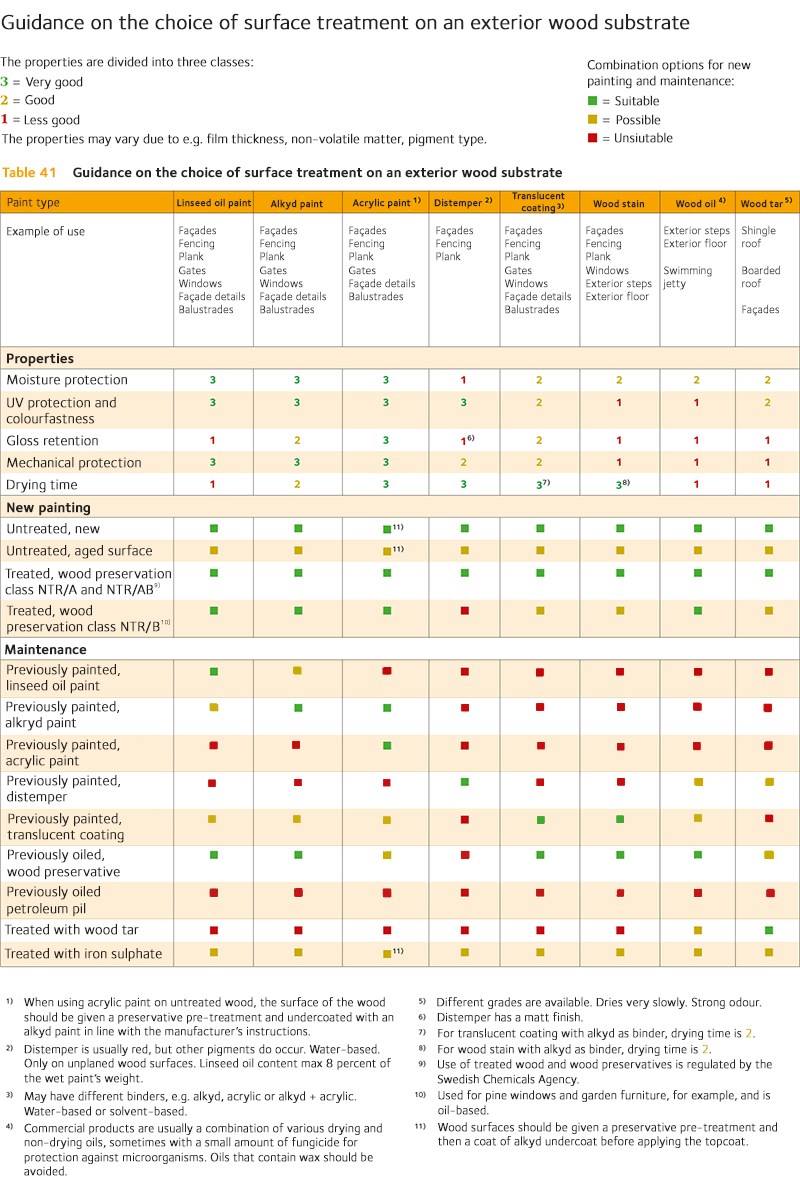

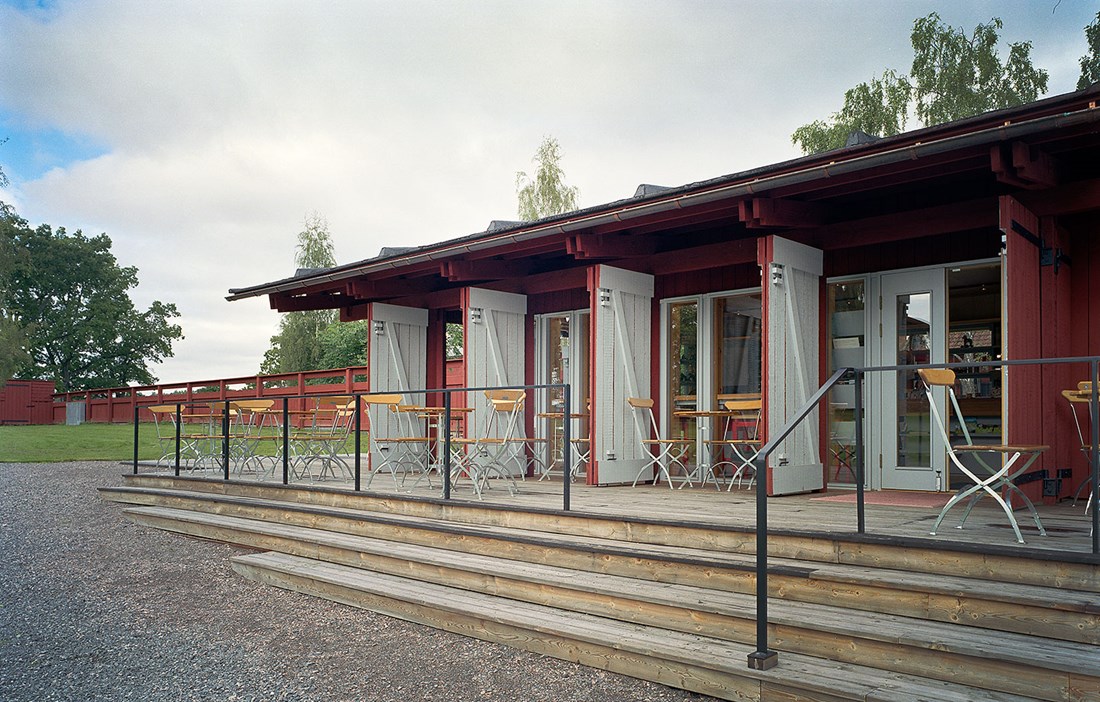
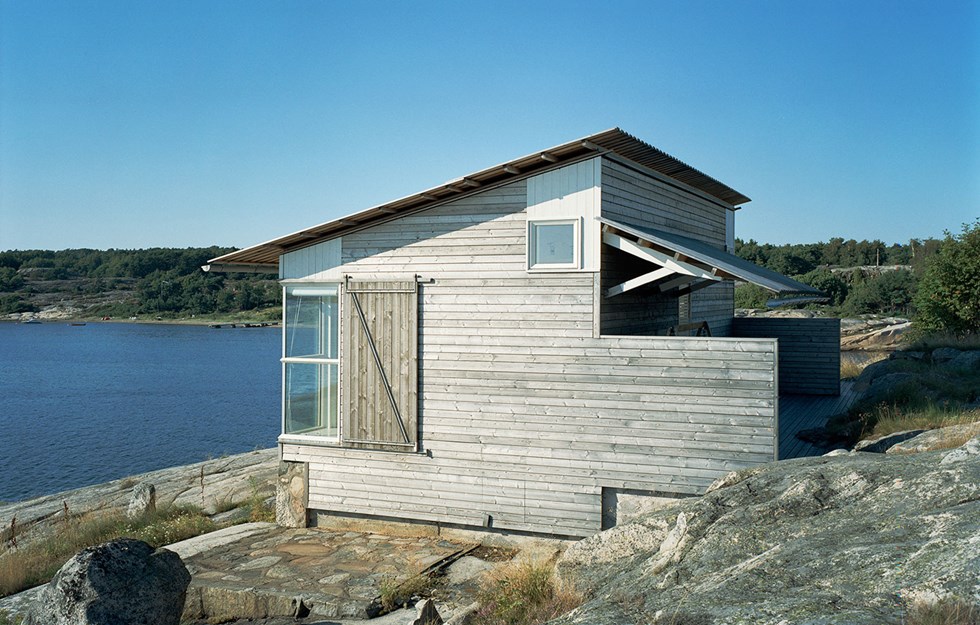
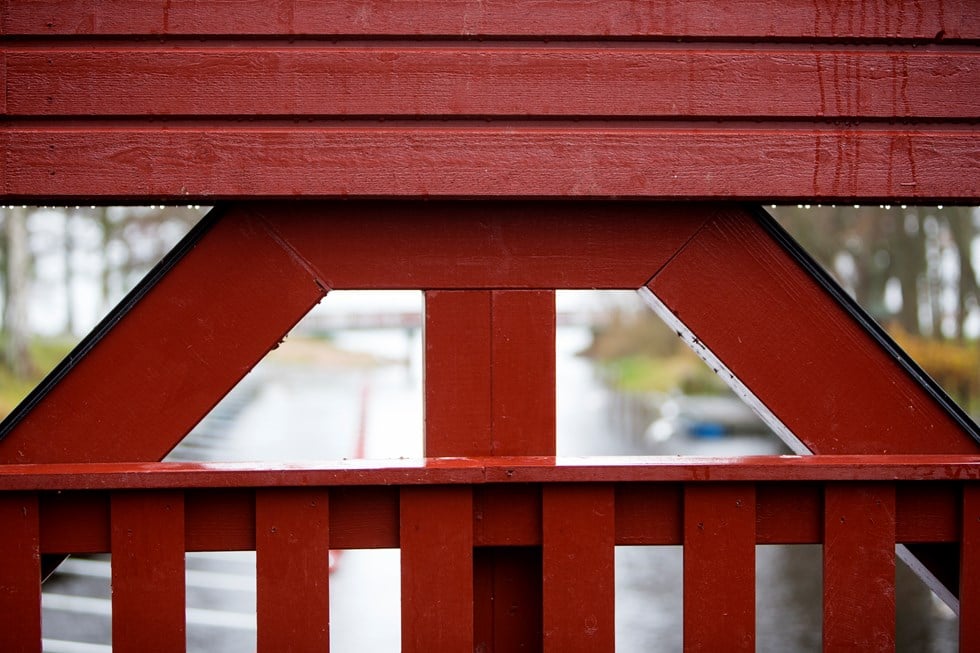
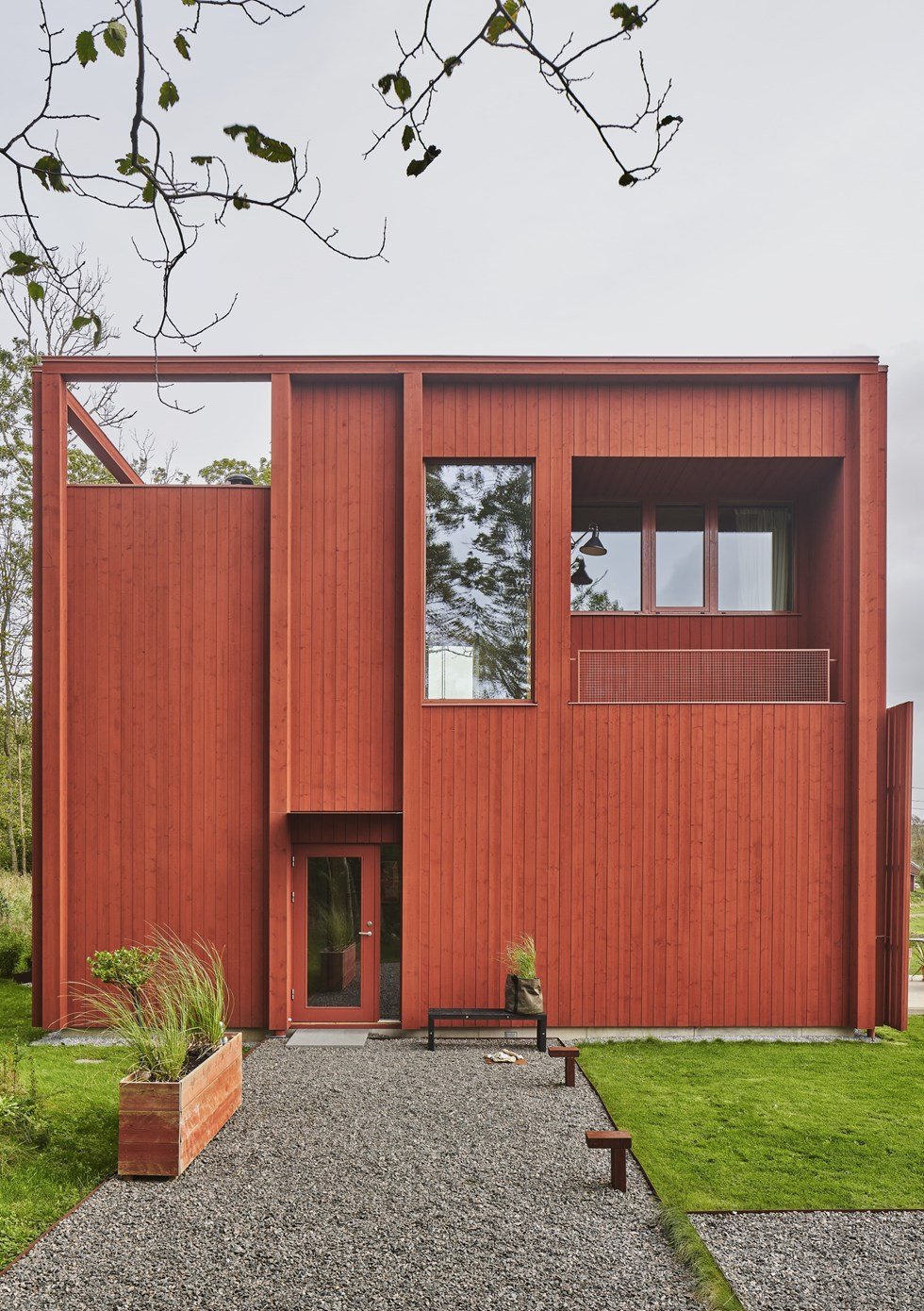
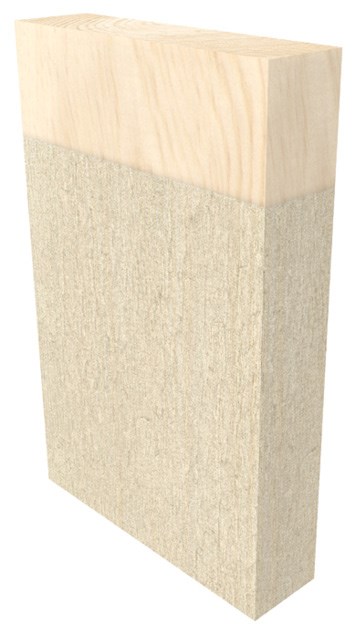
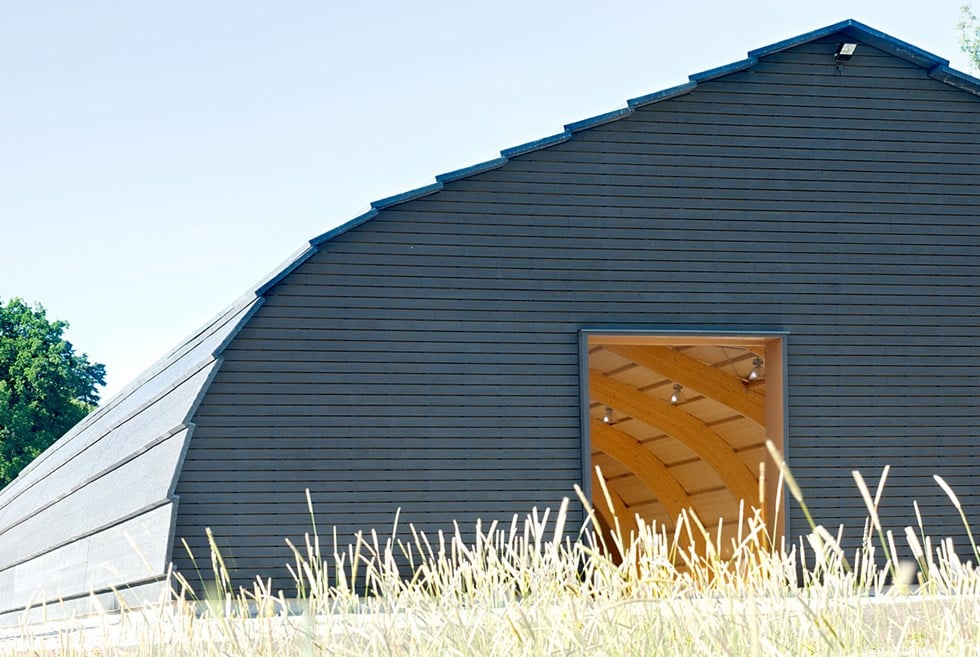
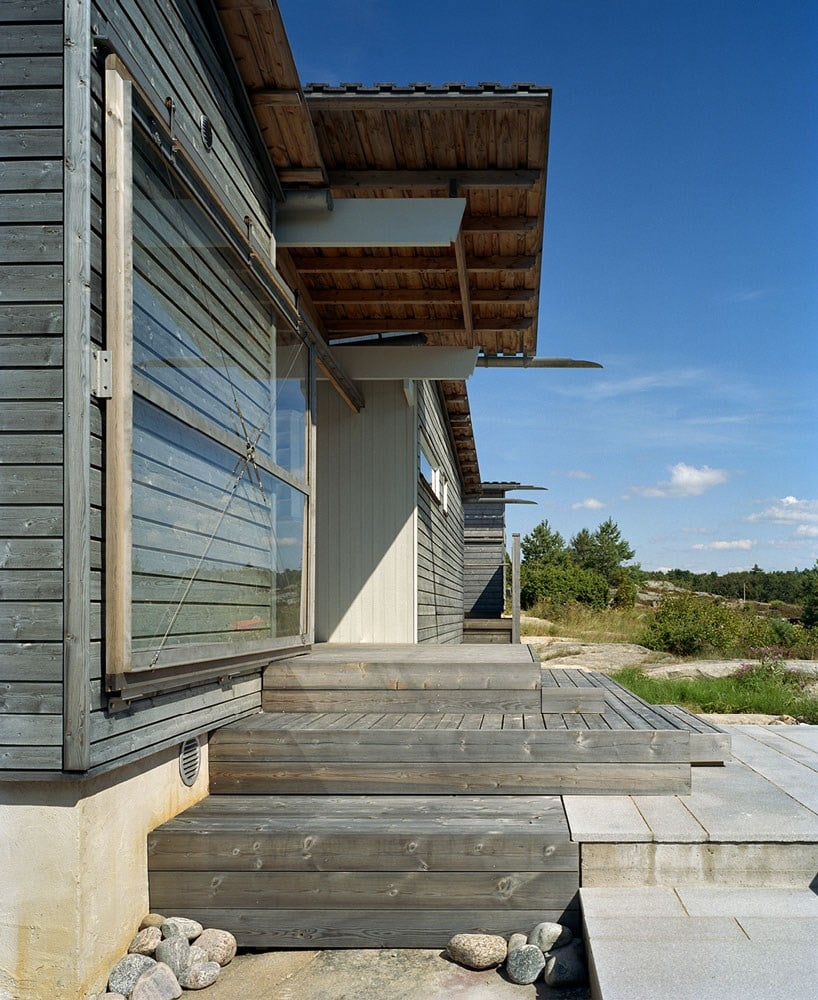
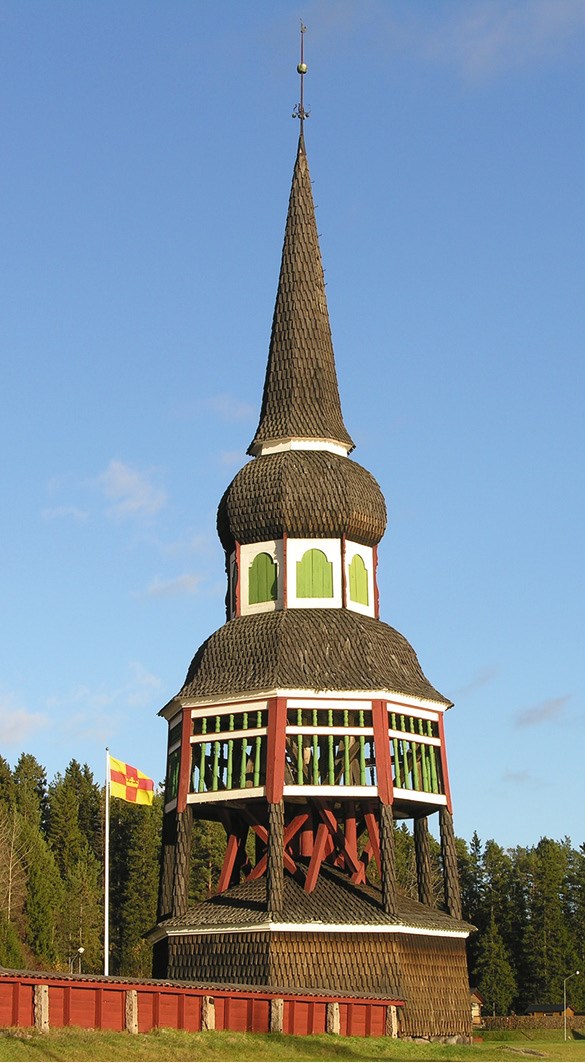 Bell tower in Älvros. Tar, red distemper and oil paint.
Bell tower in Älvros. Tar, red distemper and oil paint.